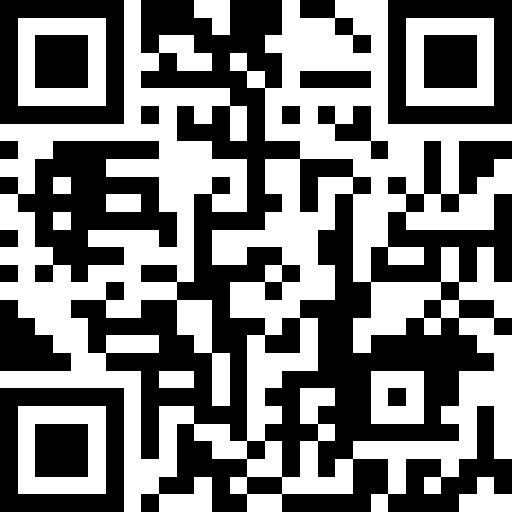Behavior-Based Safety Checklist

×
Free Behavior-Based Safety Checklist Checklist
Go digital today!
Convert your paper checklists into digital forms
Scan this QR code to use this paper checklist on your smartphone or tablet or visit https://safetyculture.com/



- Document No.
- BBS Behavior-Based Safety Observation 1. Introduce yourself, ask their name, put the person at ease and explain the process. Ask permission to do an observation. 2. Ask the person to explain the job that is being performed. 3. Ask them to define the hazards and precautions associated with the task they are performing. 4. Ask open-ended questions to learn more about at-risk behaviors. (Ex: What’s the worst accident that can happen? How could you be hurt doing this task? Why are you doing it this way?) 5. Observe the job. 6. Provide positive feedback by praising safe behaviors first. 7. Draw out the corrective action that may be required from the person. 8. Get a personal commitment that the individual will carry out this action and thank the person for participating.
- Client / Site
- Conducted on Date
- Prepared by
At-Risk BARRIERs
- 1. Training Issue, Unfamiliar - never trained, unqualified, too long since training, unusual task.
2. Management Pressure / System - time constraints, hurry, priority, poor job coordination.
3. Apathy, Insignificant - don't care, unimportant.
4. Facility and Equipment Condition - design, modification or deterioration contributing to at-risk condition or behavior.
5. Disagreement on At-Risk Practices - cannot agree that an at-risk condition or behavior exists.
6. Personal Factors or Distractions - not thinking, mind not on the task at hand, preoccupied, self imposed pressure.
7. Accepted Culture or Peer Pressure - doing the wrong thing because our peers do, going along with the crowd, rather not “rock the boat”.
8. Environment Related - affected by weather, insects, wildlife.
Critical Behavior Elements
1.0 PPE
- 1.1 • Eye & Face Protection - wearing proper eye and face protection for the task (Safety glasses, face shield, goggles).
- 0. None
- 1. Training Issue, Unfamiliar
- 2. Management Pressure / System
- 3. Apathy, Insignificant
- 4. Facility & Equipment Condition
- 5. Disagreement on At-Risk Practices
- 6. Personal Factors or Distractions
- 7. Accepted Culture / Peer Pressure
- 8. Environment Related
- 0. None
- 1. Training Issue, Unfamiliar
- 2. Management Pressure / System
- 3. Apathy, Insignificant
- 4. Facility & Equipment Condition
- 5. Disagreement on At-Risk Practices
- 6. Personal Factors or Distractions
- 7. Accepted Culture / Peer Pressure
- 8. Environment Related
- 0. None
- 1. Training Issue, Unfamiliar
- 2. Management Pressure / System
- 3. Apathy, Insignificant
- 4. Facility & Equipment Condition
- 5. Disagreement on At-Risk Practices
- 6. Personal Factors or Distractions
- 7. Accepted Culture / Peer Pressure
- 8. Environment Related
- 0. None
- 1. Training Issue, Unfamiliar
- 2. Management Pressure / System
- 3. Apathy, Insignificant
- 4. Facility & Equipment Condition
- 5. Disagreement on At-Risk Practices
- 6. Personal Factors or Distractions
- 7. Accepted Culture / Peer Pressure
- 8. Environment Related
- 0. None
- 1. Training Issue, Unfamiliar
- 2. Management Pressure / System
- 3. Apathy, Insignificant
- 4. Facility & Equipment Condition
- 5. Disagreement on At-Risk Practices
- 6. Personal Factors or Distractions
- 7. Accepted Culture / Peer Pressure
- 8. Environment Related
2.0 BODY USE and POSITION
- 2.1 • Line of Fire - worker is positioning his body to avoid injury by any moving hazards (escaping steam, falling objects).
- 0. None
- 1. Training Issue, Unfamiliar
- 2. Management Pressure / System
- 3. Apathy, Insignificant
- 4. Facility & Equipment Condition
- 5. Disagreement on At-Risk Practices
- 6. Personal Factors or Distractions
- 7. Accepted Culture / Peer Pressure
- 8. Environment Related
- 0. None
- 1. Training Issue, Unfamiliar
- 2. Management Pressure / System
- 3. Apathy, Insignificant
- 4. Facility & Equipment Condition
- 5. Disagreement on At-Risk Practices
- 6. Personal Factors or Distractions
- 7. Accepted Culture / Peer Pressure
- 8. Environment Related
- 0. None
- 1. Training Issue, Unfamiliar
- 2. Management Pressure / System
- 3. Apathy, Insignificant
- 4. Facility & Equipment Condition
- 5. Disagreement on At-Risk Practices
- 6. Personal Factors or Distractions
- 7. Accepted Culture / Peer Pressure
- 8. Environment Related
- 0. None
- 1. Training Issue, Unfamiliar
- 2. Management Pressure / System
- 3. Apathy, Insignificant
- 4. Facility & Equipment Condition
- 5. Disagreement on At-Risk Practices
- 6. Personal Factors or Distractions
- 7. Accepted Culture / Peer Pressure
- 8. Environment Related
3.0 TOOLS and EQUIPMENT
- 3.1 • Tool Use / Selection - using the right tool for the job and using it properly (correct style wrench).
- 0. None
- 1. Training Issue, Unfamiliar
- 2. Management Pressure / System
- 3. Apathy, Insignificant
- 4. Facility & Equipment Condition
- 5. Disagreement on At-Risk Practices
- 6. Personal Factors or Distractions
- 7. Accepted Culture / Peer Pressure
- 8. Environment Related
- 0. None
- 1. Training Issue, Unfamiliar
- 2. Management Pressure / System
- 3. Apathy, Insignificant
- 4. Facility & Equipment Condition
- 5. Disagreement on At-Risk Practices
- 6. Personal Factors or Distractions
- 7. Accepted Culture / Peer Pressure
- 8. Environment Related
- 0. None
- 1. Training Issue, Unfamiliar
- 2. Management Pressure / System
- 3. Apathy, Insignificant
- 4. Facility & Equipment Condition
- 5. Disagreement on At-Risk Practices
- 6. Personal Factors or Distractions
- 7. Accepted Culture / Peer Pressure
- 8. Environment Related
- 0. None
- 1. Training Issue, Unfamiliar
- 2. Management Pressure / System
- 3. Apathy, Insignificant
- 4. Facility & Equipment Condition
- 5. Disagreement on At-Risk Practices
- 6. Personal Factors or Distractions
- 7. Accepted Culture / Peer Pressure
- 8. Environment Related
4.0 EYES ON PATH / HANDS
- 4.1 • Eyes On Path - watching what you're doing and where you're going (looking for / being aware of hazards).
- 0. None
- 1. Training Issue, Unfamiliar
- 2. Management Pressure / System
- 3. Apathy, Insignificant
- 4. Facility & Equipment Condition
- 5. Disagreement on At-Risk Practices
- 6. Personal Factors or Distractions
- 7. Accepted Culture / Peer Pressure
- 8. Environment Related
- 0. None
- 1. Training Issue, Unfamiliar
- 2. Management Pressure / System
- 3. Apathy, Insignificant
- 4. Facility & Equipment Condition
- 5. Disagreement on At-Risk Practices
- 6. Personal Factors or Distractions
- 7. Accepted Culture / Peer Pressure
- 8. Environment Related
- 0. None
- 1. Training Issue, Unfamiliar
- 2. Management Pressure / System
- 3. Apathy, Insignificant
- 4. Facility & Equipment Condition
- 5. Disagreement on At-Risk Practices
- 6. Personal Factors or Distractions
- 7. Accepted Culture / Peer Pressure
- 8. Environment Related
- 0. None
- 1. Training Issue, Unfamiliar
- 2. Management Pressure / System
- 3. Apathy, Insignificant
- 4. Facility & Equipment Condition
- 5. Disagreement on At-Risk Practices
- 6. Personal Factors or Distractions
- 7. Accepted Culture / Peer Pressure
- 8. Environment Related
- 0. None
- 1. Training Issue, Unfamiliar
- 2. Management Pressure / System
- 3. Apathy, Insignificant
- 4. Facility & Equipment Condition
- 5. Disagreement on At-Risk Practices
- 6. Personal Factors or Distractions
- 7. Accepted Culture / Peer Pressure
- 8. Environment Related
5.0 PROCESS HAZARDS
- 5.1 • LOTO - are workers protected from potential hazards (locks / tags / grounds applied or removed, lines depressurized).
- 0. None
- 1. Training Issue, Unfamiliar
- 2. Management Pressure / System
- 3. Apathy, Insignificant
- 4. Facility & Equipment Condition
- 5. Disagreement on At-Risk Practices
- 6. Personal Factors or Distractions
- 7. Accepted Culture / Peer Pressure
- 8. Environment Related
link copied
Kevin Crain
Behavior-Based Safety Checklist
Behavior-Based Safety Observation
Print as PDF
The templates available in our Public Library have been created by our customers and employees to help get you started using SafetyCulture's solutions. The templates are intended to be used as hypothetical examples only and should not be used as a substitute for professional advice. You should seek your own professional advice to determine if the use of a template is permissible in your workplace or jurisdiction. You should independently determine whether the template is suitable for your circumstances.





